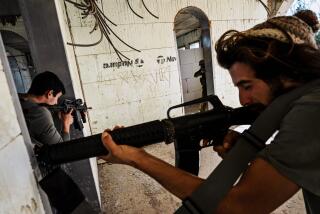King Herod’s return
AFTER 2,000 YEARS of indignity and ignominy, Herod the Great has finally gotten his revenge.
During their revolt against Roman rule over Judea between AD 66 and 72, Jews who remembered King Herod as a Roman puppet smashed his sarcophagus, which had been interred with royal pomp about 70 years before. Christians have identified him as a baby killer who forced Jesus’ family to flee Bethlehem. And Herod’s habit of having his rivals and relatives killed has hardly burnished his image.
True, he built monumental projects — not only Masada and Caesarea but the grand expansion of the second Jewish temple in Jerusalem, the best-known remnant of which is the Western Wall. In the main, though, he’s been a forgotten and derided historical figure.
But now Herod is back, at least in spirit. Israeli archeologists announced earlier this month that they’ve found his tomb, eight miles south of Jerusalem. And that tomb has become yet another impediment on the already impassable road to Israeli-Palestinian peace.
In the land of Israel — or Palestine, as Palestinians and others call it — anything that demonstrates the area’s Jewish past, whether above ground or below, makes a big impression.
For Israelis, such finds are seen as an emblem of the Jews’ ancient and unbroken connection with the land, going back 3,500 years, that justifies the existence of Israel as a Jewish state. For Palestinians, they’re seen as a way of legitimizing Israel — the creation of which turned many of them or their forebears into refugees — and are therefore often dismissed as myth or fantasy.
In 1983, I saw how the unearthing of evidence of the Jewish past gives heart to some Israelis. While researching a book on the West Bank, I visited the Jewish settlement of Shiloh, in the northern West Bank. Archeologists were digging at the nearby site of ancient Shiloh, which in biblical times was the first capital of Israel. It was in Shiloh that, according to the Hebrew Bible, the Ark of the Covenant rested. Every evening the archeologists would display their finds. When they showed artifacts from the Israelite period, the settlers cheered; for them this was proof that they were now living in the ancient heart of the land of Israel.
Small wonder that archeological finds like these provoke many Palestinians to deny that such discoveries, and any other evidence of Jewish history in either Israel or the West Bank, have anything to do with Jews. After the recent announcement that Herod’s tomb had been found, the Palestinian response was quick and sharp. A Palestinian official said the finding lacked scientific credibility and was driven by ideological motivations.
But this episode of archeological denial pales in comparison with the decades of denial in the case of Jerusalem’s Temple Mount, which is known to Arabs as Haram al Sharif, or the Noble Sanctuary.
In 1930, when Britain administered the area, the Supreme Muslim Council in Jerusalem noted that the Temple Mount’s “identity with the site of Solomon’s Temple is beyond dispute.” But at the Camp David summit in 2000, Yasser Arafat insisted that a Jewish temple had existed not on the Temple Mount but in Nablus. And an Arafat aide, Saeb Erekat, said, to President Clinton’s amazement, “I don’t believe there was a temple on top of the Haram, I really don’t.” Mahmoud Abbas, the current Palestinian Authority president, later agreed with Erekat, as did the mufti of Jerusalem. Arafat later went further and denied the temple existed anywhere in Israel, the West Bank or Gaza, including Nablus.
Today, denial of the temple’s existence has become a mainstay of Palestinian rhetoric. “They say that the temple was here,” a Palestinian historian scoffed. “What temple ? What archeological remains?” And temple denial has turned into temple removal. During the last few years, Palestinians have discarded remains of the first and second temples.
This absurd Palestinian denial of Jewish roots in the land has been matched on the part of Israelis who deny that there was a large and long-indigenous population of Arabs in Palestine when the Zionist movement vastly expanded the number of Jews in the area more than 100 years ago. Fortunately, the denial of Palestinian history has been utterly discredited among nearly all Israelis.
Only when each side recognizes the historical right of the other to live in the region will it be possible to begin to talk about peace and a fair reckoning on Jerusalem. And only then will it be possible to put Herod’s vengeful ghost back into his haunted archeological tomb.
More to Read
Sign up for Essential California
The most important California stories and recommendations in your inbox every morning.
You may occasionally receive promotional content from the Los Angeles Times.








